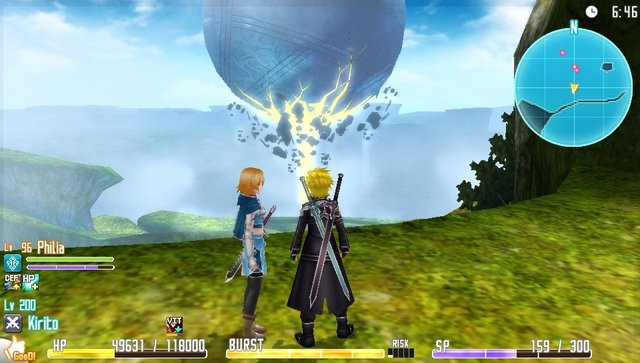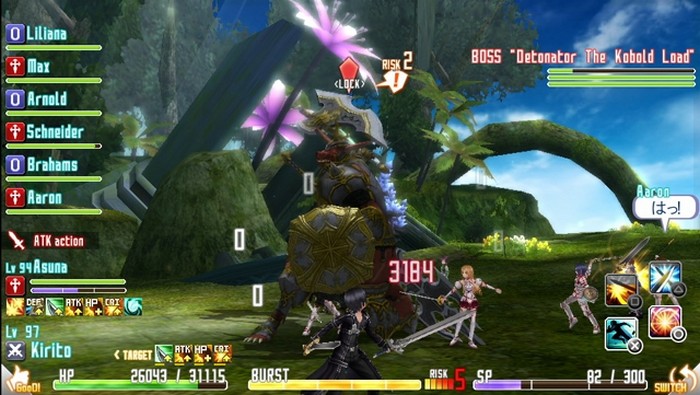

Alas, these elements are overshadowed by confusing sides missions, a tangled plot, and awful characters. If the entire game was just battle and exploration, I could give SAO a thumbs up and call it a day.

companions or other players via ad-hoc, which was a nice addition since it made SAO feel more like a real MMORPG. I could also explore certain areas with multiple A.I.

Each section of Sword Art Online is impressively large, and although that sometimes meant traversing long and difficult roads to complete a mission, it also meant plenty of opportunities to stumble upon hidden treasure. When I wasn’t fighting monsters, I was running around beaches and forests looking for rare loot and tougher-than-normal monsters to challenge. I then ordered Klein to follow up with his own sword attack, while I used a weapon skill to buff my stats and dole out even more punishment. For example, while fighting a three-headed dragon, I quickly switched places with the swordsman Klein to have him draw the enemy’s aggro while I ran behind it and dealt out a devastating 27-hit combo using my dual blades. companion during battle was fun too, since I could team up with them to unleash a fury of chain attacks. I also liked being able to access my favorite attacks by hotkeying them to the Vita’s face buttons, since it allowed me to change battle tactics on the fly, which was super useful against tough enemies. There’s an impressive number of weapon and skill based abilities to choose from, and being able to decide when and how I used them ensured combat never got stale or repetitive. The combat is hands-down the best part of Sword Art Online, and the one thing that kept me moving forward when things got rough. That’s a shame, because if you took a machete to all that tangled mess, Sword Art Online would be a solid action RPG. It’s rife with issues like fuzzy directions, shameless fan pandering, and a fragmented story. This jarring translation is emblematic of Sword Art Online: Hollow Fragment’s myriad problems.


 0 kommentar(er)
0 kommentar(er)
